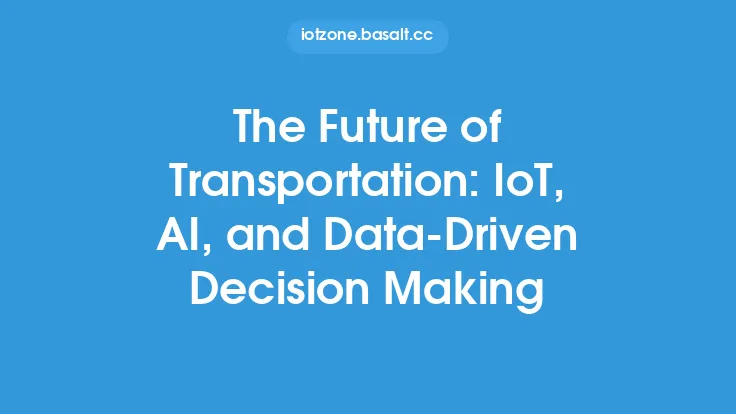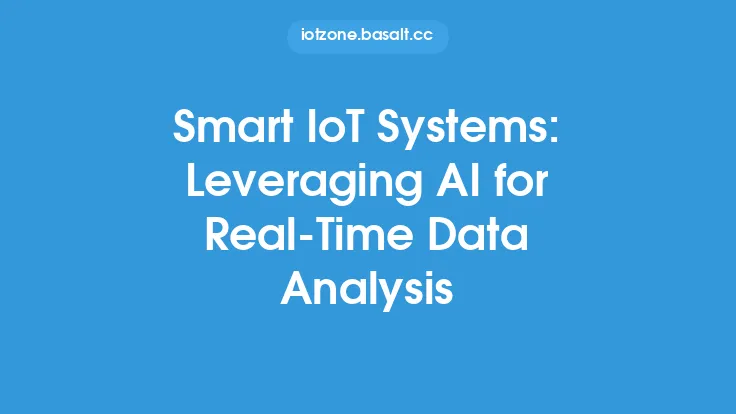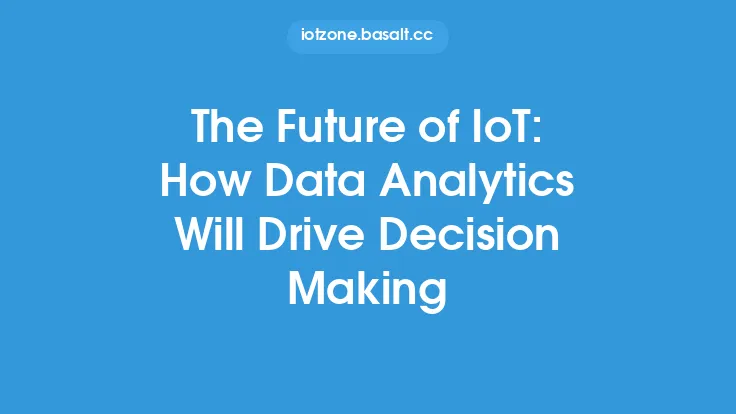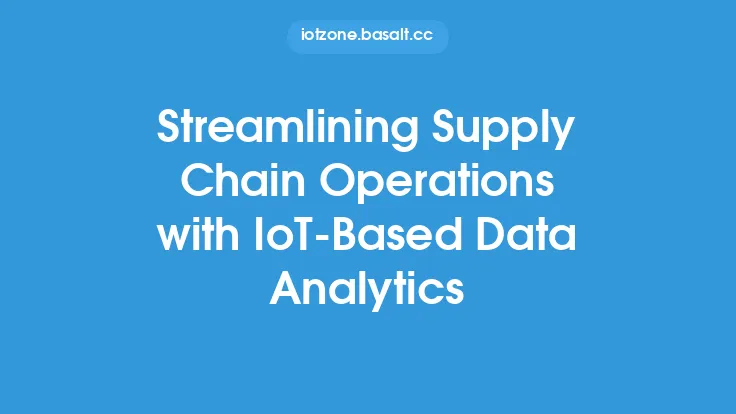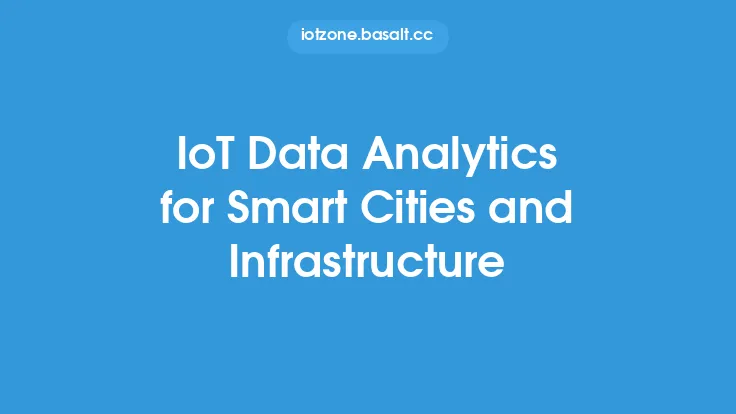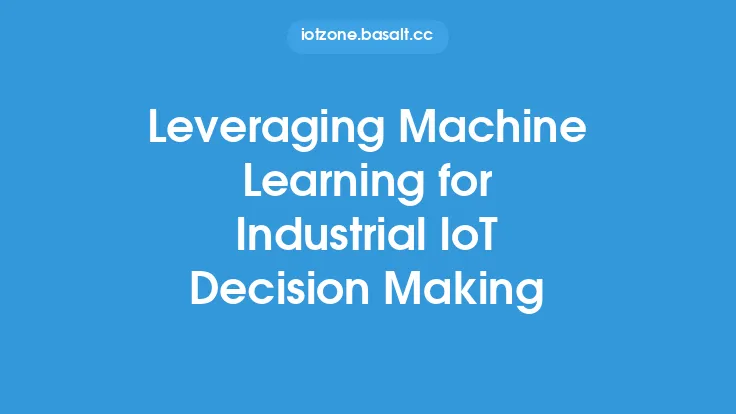The Internet of Things (IoT) has revolutionized various industries, and agriculture is no exception. The integration of IoT in agriculture has given rise to a new era of farming, where data-driven decision-making is the norm. IoT data analytics plays a crucial role in this context, enabling farmers to make informed decisions that can significantly impact crop yields, resource management, and overall farm productivity. In this article, we will delve into the world of IoT data analytics in agriculture, exploring its benefits, applications, and the technologies that make it possible.
Introduction to IoT Data Analytics in Agriculture
IoT data analytics in agriculture involves the collection, analysis, and interpretation of data from various sources, including sensors, drones, satellites, and other IoT devices. This data can include information on soil moisture levels, temperature, humidity, crop health, and other environmental factors that can impact crop growth and development. By analyzing this data, farmers can gain valuable insights into their farm operations, identifying areas of inefficiency and opportunities for improvement. IoT data analytics can help farmers optimize crop yields, reduce waste, and improve resource allocation, leading to increased productivity and profitability.
Benefits of IoT Data Analytics in Agriculture
The benefits of IoT data analytics in agriculture are numerous. Some of the most significant advantages include:
- Improved crop yields: By analyzing data on soil conditions, weather patterns, and crop health, farmers can make informed decisions about planting, irrigation, and fertilization, leading to improved crop yields and quality.
- Enhanced resource management: IoT data analytics can help farmers optimize resource allocation, reducing waste and improving the efficiency of water, fertilizer, and pesticide use.
- Reduced costs: By identifying areas of inefficiency and optimizing resource allocation, farmers can reduce costs and improve profitability.
- Improved decision-making: IoT data analytics provides farmers with accurate and timely data, enabling them to make informed decisions about their farm operations.
- Increased sustainability: By optimizing resource allocation and reducing waste, IoT data analytics can help farmers reduce their environmental impact, leading to more sustainable farming practices.
Applications of IoT Data Analytics in Agriculture
IoT data analytics has a wide range of applications in agriculture, including:
- Crop monitoring: IoT sensors and drones can be used to monitor crop health, detecting issues such as pests, diseases, and nutrient deficiencies.
- Soil analysis: IoT sensors can be used to analyze soil conditions, including moisture levels, temperature, and nutrient content.
- Weather forecasting: IoT sensors and satellites can be used to collect data on weather patterns, enabling farmers to make informed decisions about planting, irrigation, and harvesting.
- Livestock monitoring: IoT sensors and wearables can be used to monitor livestock health, detecting issues such as illness, injury, and stress.
- Supply chain management: IoT data analytics can be used to track the movement of crops and livestock throughout the supply chain, improving efficiency and reducing waste.
Technologies Used in IoT Data Analytics
Several technologies are used in IoT data analytics, including:
- Sensors: IoT sensors can be used to collect data on a wide range of factors, including soil moisture levels, temperature, humidity, and crop health.
- Drones: Drones can be used to collect data on crop health, detecting issues such as pests, diseases, and nutrient deficiencies.
- Satellites: Satellites can be used to collect data on weather patterns, soil conditions, and crop health.
- Cloud computing: Cloud computing platforms can be used to store, analyze, and interpret IoT data, providing farmers with real-time insights into their farm operations.
- Artificial intelligence (AI) and machine learning (ML): AI and ML algorithms can be used to analyze IoT data, identifying patterns and trends that can inform decision-making.
Challenges and Limitations of IoT Data Analytics in Agriculture
While IoT data analytics has the potential to revolutionize agriculture, there are several challenges and limitations that must be addressed. These include:
- Data quality: IoT data can be affected by a range of factors, including sensor accuracy, data transmission errors, and interference from other devices.
- Data security: IoT data can be vulnerable to cyber attacks, highlighting the need for robust security measures to protect sensitive information.
- Interoperability: IoT devices and systems can be proprietary, making it difficult to integrate data from different sources.
- Cost: IoT data analytics can be expensive, particularly for small-scale farmers or those with limited resources.
- Complexity: IoT data analytics can be complex, requiring specialized skills and knowledge to interpret and analyze data.
Best Practices for Implementing IoT Data Analytics in Agriculture
To get the most out of IoT data analytics, farmers should follow several best practices, including:
- Start small: Begin with a small pilot project, testing IoT devices and analytics platforms to determine their effectiveness.
- Choose the right technology: Select IoT devices and analytics platforms that are tailored to your specific needs and goals.
- Ensure data quality: Implement robust data quality control measures to ensure that IoT data is accurate and reliable.
- Invest in training: Provide training and support for farm staff, ensuring that they have the skills and knowledge needed to interpret and analyze IoT data.
- Monitor and evaluate: Continuously monitor and evaluate the effectiveness of IoT data analytics, making adjustments as needed to optimize results.
Conclusion
IoT data analytics has the potential to revolutionize agriculture, enabling farmers to make informed decisions that can significantly impact crop yields, resource management, and overall farm productivity. By understanding the benefits, applications, and technologies used in IoT data analytics, farmers can unlock the full potential of this powerful tool. While there are challenges and limitations to be addressed, the benefits of IoT data analytics in agriculture are clear. As the agriculture industry continues to evolve, it is likely that IoT data analytics will play an increasingly important role in shaping the future of farming.
